Ready for another amazing year of sky watching and astronomy in 2020? Hard to believe, were already a fifth of the way into the 21st century. 2020 rounds out the final year of the second decade, promising an amazing year of skywatching to come.
The events that follow are excerpted mostly from our book, The Universe Today Ultimate Guide to Viewing the Cosmos. Chapter 10 lists top astronomy events all the way out to 2024, and the next great total solar eclipse across North America.
The planet Venus rules astronomy 2020, with one each favorable apparitions in the dawn and dusk sky. Mars also makes a fine apparition in October, reaching 22” in size at opposition. Watch for a dramatic occultation of Mars by the waning crescent Moon on the morning of February 18th. A fine close pairing of Venus and Jupiter in the dusk also ends out the year.
The solar minimum marking the end of Cycle #24 and the start of Cycle #25 should also occur on or around mid-2020… or will solar cycle #25 be absent all together?
Meteor Showers in 2020
Two top meteor showers to watch for in 2020 are the surefire August Perseids and the December Geminids.
In describing meteor showers for the year, we’ll list two main factors: the expected zenithal hourly rate (ZHR), or the rate you would expect to see under ideal conditions (pristine dark skies with the shower radiant directly overhead) and the phase of the Moon at the shower’s peak.
Coming right up after New Year’s Day are the Quadrantid meteors on January 4th, with an estimated ZHR of 100 per hour. In 2020, however, these will vie with a waxing gibbous Moon.
Favorable showers for the year include:
-The Lyrids (Apr 22) ZHR=20, Moon 0.5% illuminated, waning crescent.
-The June Boötids (Jun 27), ZHR=50, Moon 41% illuminated, waxing crescent.
-The Perseids (Aug 12), ZHR=100, Moon 40% illuminated, waning crescent.
-Taurids (Oct 10), ZHR=10, Moon 43% illuminated, waning crescent.
-The Orionids (Oct 21), ZHR=20, Moon 32% illuminated, waxing crescent.
-The Leonids (Nov 17), ZHR=20, Moon 10% illuminated, waxing crescent.
-The Geminids (Dec 14). ZHR=120, Moon 0.1% illuminated, New Moon.
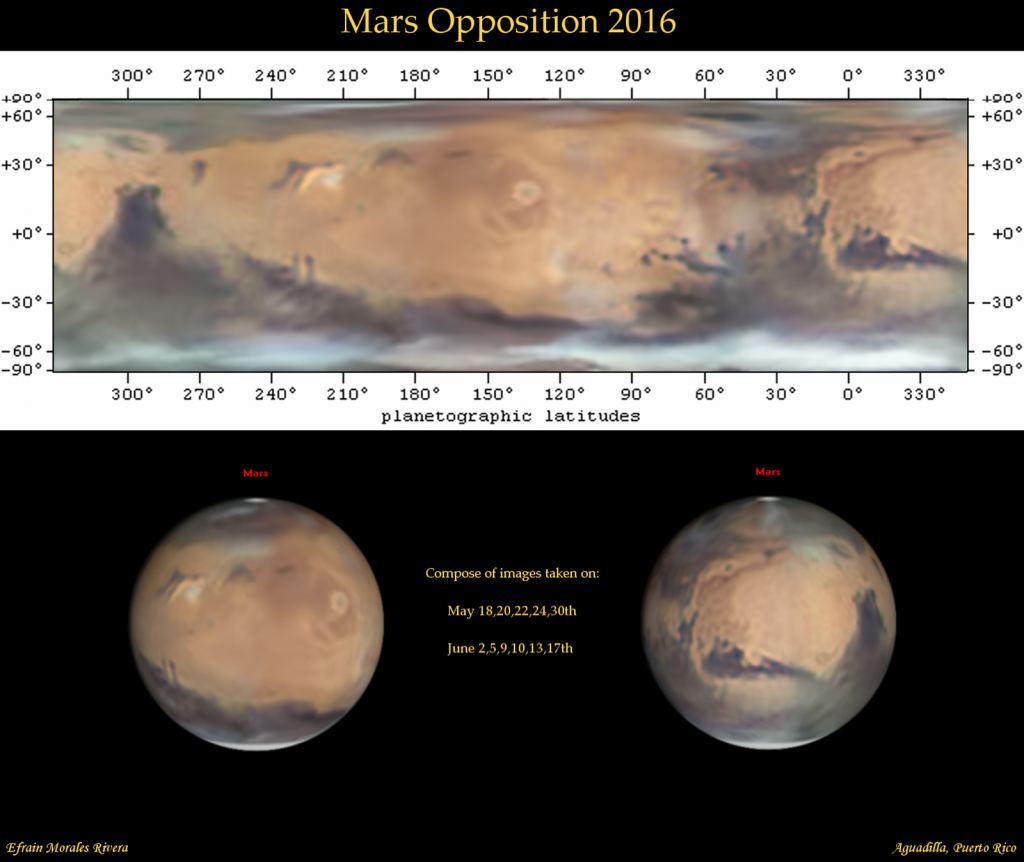
-The Outer Planets in 2019: The very best time to observe an outer planet is when it reaches opposition, and rises opposite to the setting Sun, staying above the horizon for the entire evening until sunrise. All of the outer planets except Mars reach opposition once a year; Mars reaches opposition every other year, and 2020 is such a year. Here are the opposition dates centered on the best observing seasons for each of the naked eye outer planets in 2020:
–Mars (Oct 13)
–Jupiter (Jul 14)
-Saturn (Jul 20)
-Uranus (Oct 31)
-Neptune (Sep 11)
-Pluto (Jul 15)
–The Inner Planets in 2020: Venus reaches greatest elongation twice in 2020, dominating the dusk sky for the first half of the year, and the dawn sky in the last half. Greatest elongation is a great time to try and spy Venus in the daytime, and two easy dates to pull this off are March 28th and August 15th, when the crescent Moon is nearby. Also, mark April 4th and April 5th on your calendar, as Venus will nick the Pleiades star cluster. Venus did so in 2012 and will do so once again in 2028, part of the ‘Great Eight Year Cycle’ of repeating patterns for the planet, as 13 orbits of Venus very nearly equals eight orbits of the Earth.
–Venus (Mar 24) 46 degrees east (dusk).
-Venus (Aug 13) 46 degrees west (dawn).
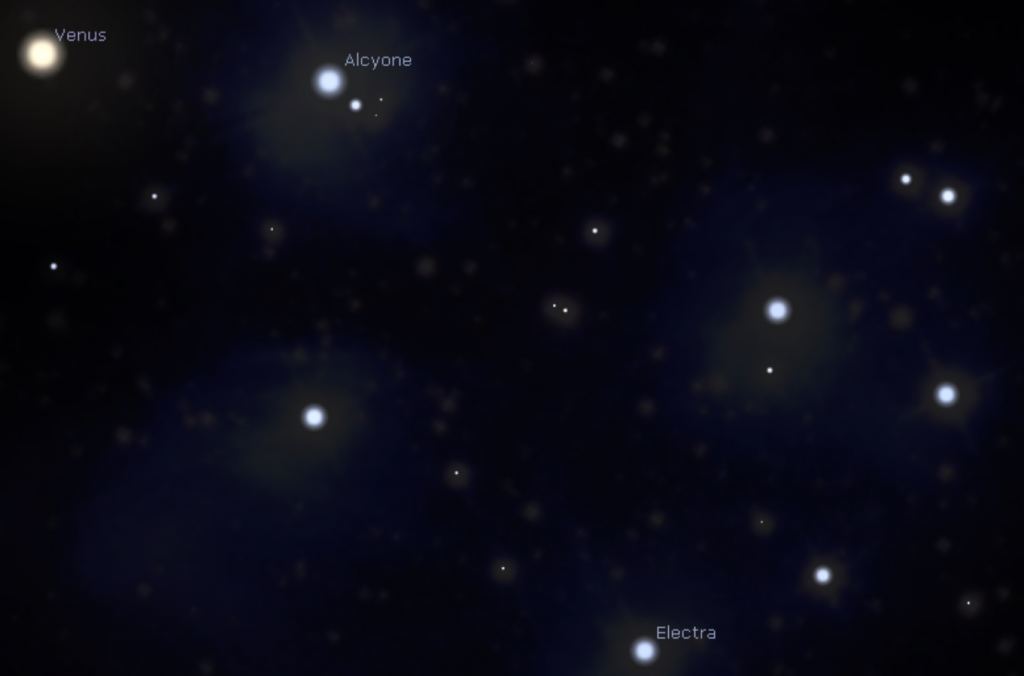
Mercury reaches greatest elongation six times in 2020, three times each in the dusk and the dawn:
-Mercury (Feb 10) 18 degrees east (dusk).
-Mercury (Mar 24) 28 degrees west (dawn).
-Mercury (Jun 4) 24 degrees east (dusk).
-Mercury (Jul 22) 20 degrees west (dawn).
-Mercury (Oct 1) 26 degrees east (dusk).
-Mercury (Nov 10) 19 degrees west (dawn).
Eclipses in 2020: There are six eclipses in 2020, two solar and four lunar. Southern Asia gets a near repeat of the 2019 Boxing Day annular eclipse, while the extreme southern tip of South America gets the only total solar eclipse of the year. Unfortunately, all four lunar eclipses are faint penumbrals, with the Moon just grazing the outer bright shadow of the Earth.
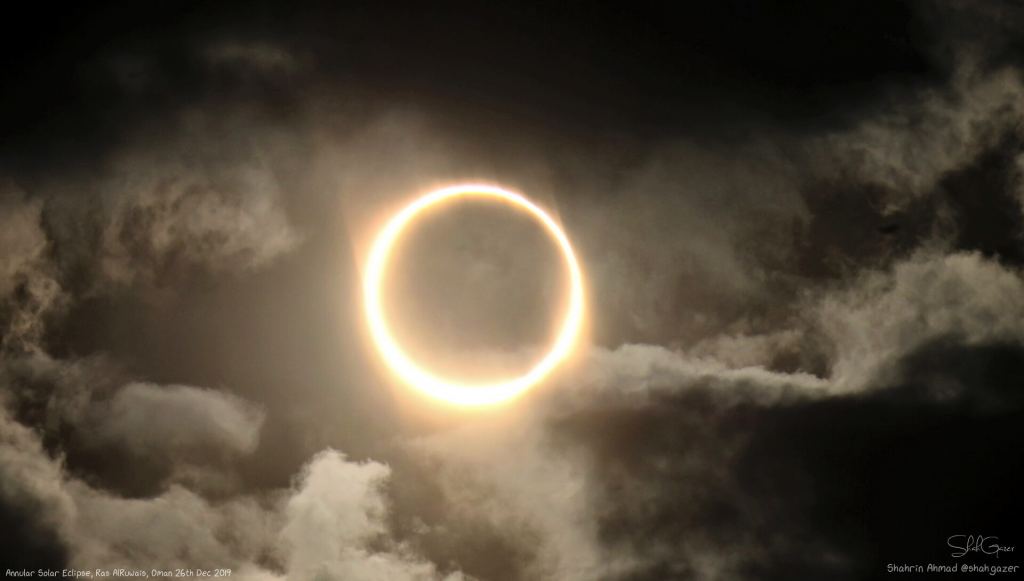
-A penumbral lunar eclipse (Jan 10), with a maximum penumbral immersion of 88% for Europe, Africa, Asia and Australia.
-A penumbral lunar eclipse (Jun 5), with a maximum penumbral immersion of 59% for Europe, Africa, Asia and Australia.
– An annular solar eclipse (Jun 21) with a maximum duration of annularity of 38 seconds crossing central Africa, southern Asia, China and the Pacific.
-A penumbral lunar eclipse (Jul 5) with a maximum penumbral immersion of 36% for the Americas, southwest Europe and Africa.
-A penumbral lunar eclipse (Nov 30) with a maximum penumbral immersion of 74% for Asia, Australia, the Pacific and the Americas.
-A total solar eclipse (Dec 14) with a maximum duration of 2 minutes and 10 seconds with totality crossing the South Pacific, Chile, Argentina and the South Atlantic.

Closest conjunctions in 2020
-Planet vs. planet: Watch for Jupiter and Saturn just 6′ apart on December 21st, 30 degrees east of the Sun in the dusk sky. This is a fine close conjunction, with the two gas giants passing 1/5th the apparent distance apart of a Full Moon.
-Planet vs. bright star: Venus passes 5’ from Regulus on October 2nd, 40 degrees west of the Sun in the dawn.
Best occultation of a planet by the Moon in 2020: Watch for the waning crescent Moon to occult Mars for North America February 18th. There are 10 occultations in 2020 involving the Moon and four planets:
-Mercury (1): (Dec 14) Europe, 0.1% Moon (unobservable, only 3 degrees from the Sun).
-Venus (2): (June 19) NE North America, -4% Moon – (Dec 12) NE Asia -5% Moon.
-Mars (5): (Feb 18) North America, -24% Moon – (Mar 18) the southernmost tip of South America, -30% Moon – (Aug 9) SE South America -72% Moon – (Sep 6) Central South America -85% Moon – (Oct 3) the southernmost tip of South America, -98% Moon.
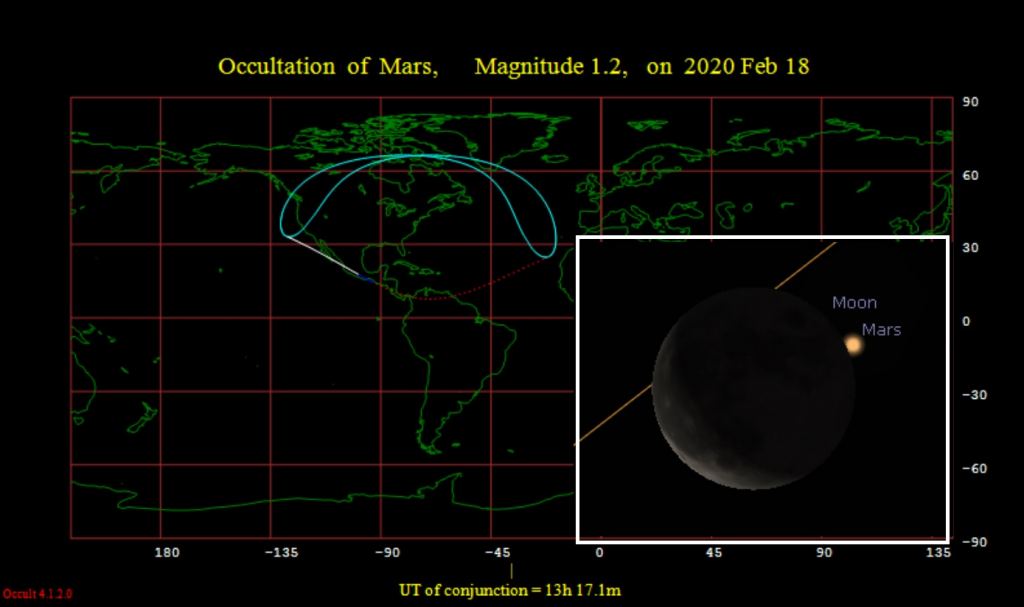
-Jupiter (2): (Jan 23) Australia/New Zealand in the daytime, -3% Moon – (Feb 19) Antarctica, -13% Moon.
The Moon does not occult a +1 magnitude or brighter star in 2020.
Periodic Comets over magnitude +10: There aren’t any great naked eye comets on tap for 2020, but there are a few binocular comets worth watching out for:
-P/2017 T2 PanSTARRS may reach +8th magnitude as it crosses into Ursa Major and reaches perihelion (May 6).
-88/P Howell perihelion (Sept 26, mag. +9) near the Libra-Scorpius border.
-2/P Encke reaches perihelion (Jun 26, mag. +8) in Gemini.
Finally, there are two naked eye stars occulted by asteroids in 2020:
-A +4.3 magnitude star in Ophiuchus occulted by asteroid 191 Kolga across the southern U.S. on February 10th.
-A +3.8 magnitude star in Virgo occulted by asteroid 498 Tokio across northern Russia on December 12th.
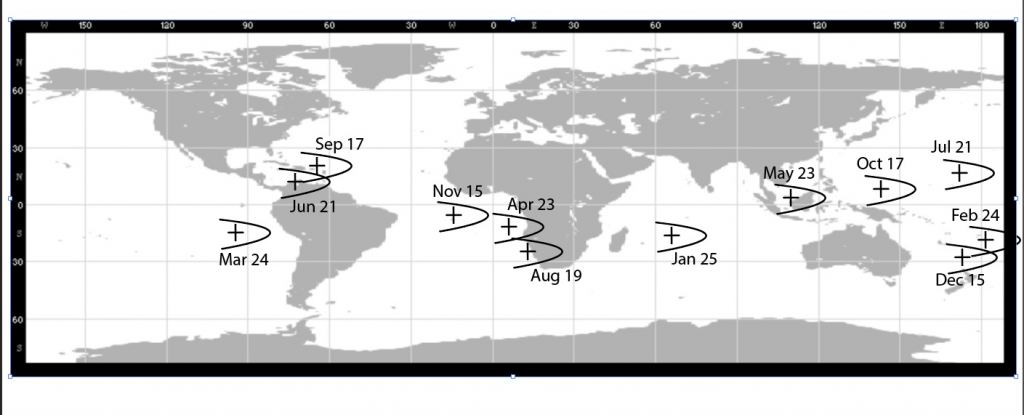
All amazing events coming to a sky near you in astronomy 2020.
Lead image – Mars at opposition courtesy of Alan Dyer.

